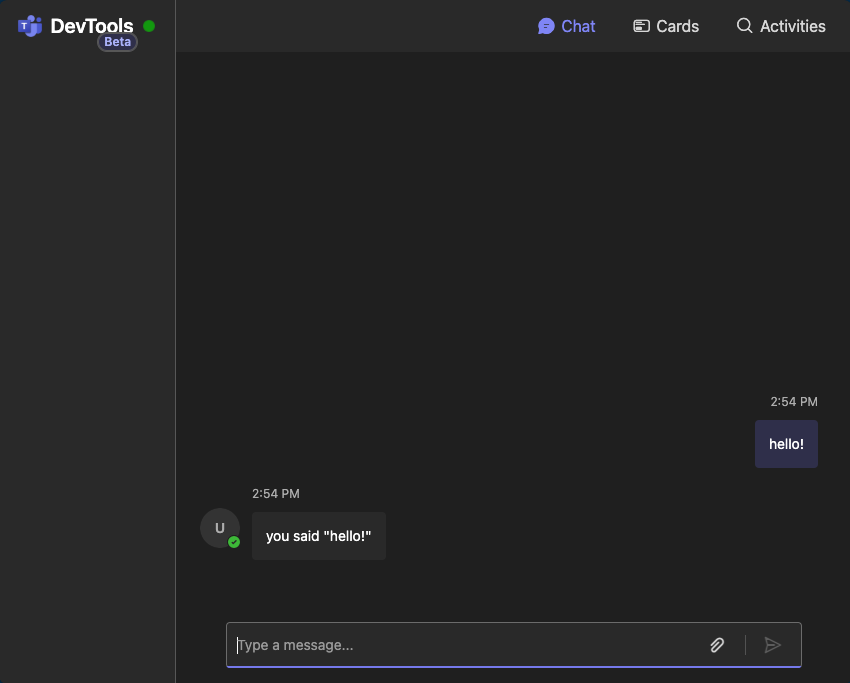Note
Access to this page requires authorization. You can try signing in or changing directories.
Access to this page requires authorization. You can try changing directories.
[This article is prerelease documentation and is subject to change.]
Get started with Teams AI Library (v2) quickly using the Teams CLI.
Set up a new project
Prerequisites
- .NET v.8 or higher. Install or upgrade from dotnet.microsoft.com.
Instructions
Install the Teams CLI
Use your terminal to install the Teams CLI globally using npm:
npm install -g @microsoft/teams.cli@preview
Note
The Teams CLI is a command-line tool that helps you create and manage Teams applications. It provides a set of commands to simplify the development process.
After installation, you can run teams --version to verify the installation.
Creating Your First Agent
Let's create a simple echo agent that responds to messages. Run:
teams new csharp quote-agent --template echo
This command:
- Creates a new directory called
Quote.Agent. - Bootstraps the echo agent template files into your project directory.
- Creates your agent's manifest files, including a
manifest.jsonfile and placeholder icons in theQuote.Agent/appPackagedirectory. The Teams app manifest is required for sideloading the app into Teams.
The
echotemplate creates a basic agent that repeats back any message it receives - perfect for learning the fundamentals.
Running your agent
Navigate to your new agent's directory:
cd Quote.Agent/Quote.Agent
Install the dependencies:
dotnet restore
Start the development server:
dotnet run
In the console, you should see a similar output:
[INFO] Microsoft.Hosting.Lifetime Now listening on: http://localhost:3978
[WARN] Echo.Microsoft.Teams.Plugins.AspNetCore.DevTools ⚠️ Devtools are not secure and should not be used production environments ⚠️
[INFO] Echo.Microsoft.Teams.Plugins.AspNetCore.DevTools Available at http://localhost:3978/devtools
[INFO] Microsoft.Hosting.Lifetime Application started. Press Ctrl+C to shut down.
[INFO] Microsoft.Hosting.Lifetime Hosting environment: Development
When the application starts, you'll see:
- An http server starting up (on port 3978). This is the main server which handles incoming requests and serves the agent application.
- A devtools server starting up. This is a developer server that provides a web interface for debugging and testing your agent quickly, without having to deploy it to Teams.
Let's navigate to the devtools server. Open your browser and head to http://localhost:3978/devtools. You should see a simple interface where you can interact with your agent. Send it a message!

Next steps
Now that you have your first agent running, learn about the code basics to understand its components and structure.
Otherwise, if you want to run your agent in Teams, check out the Running in Teams guide.